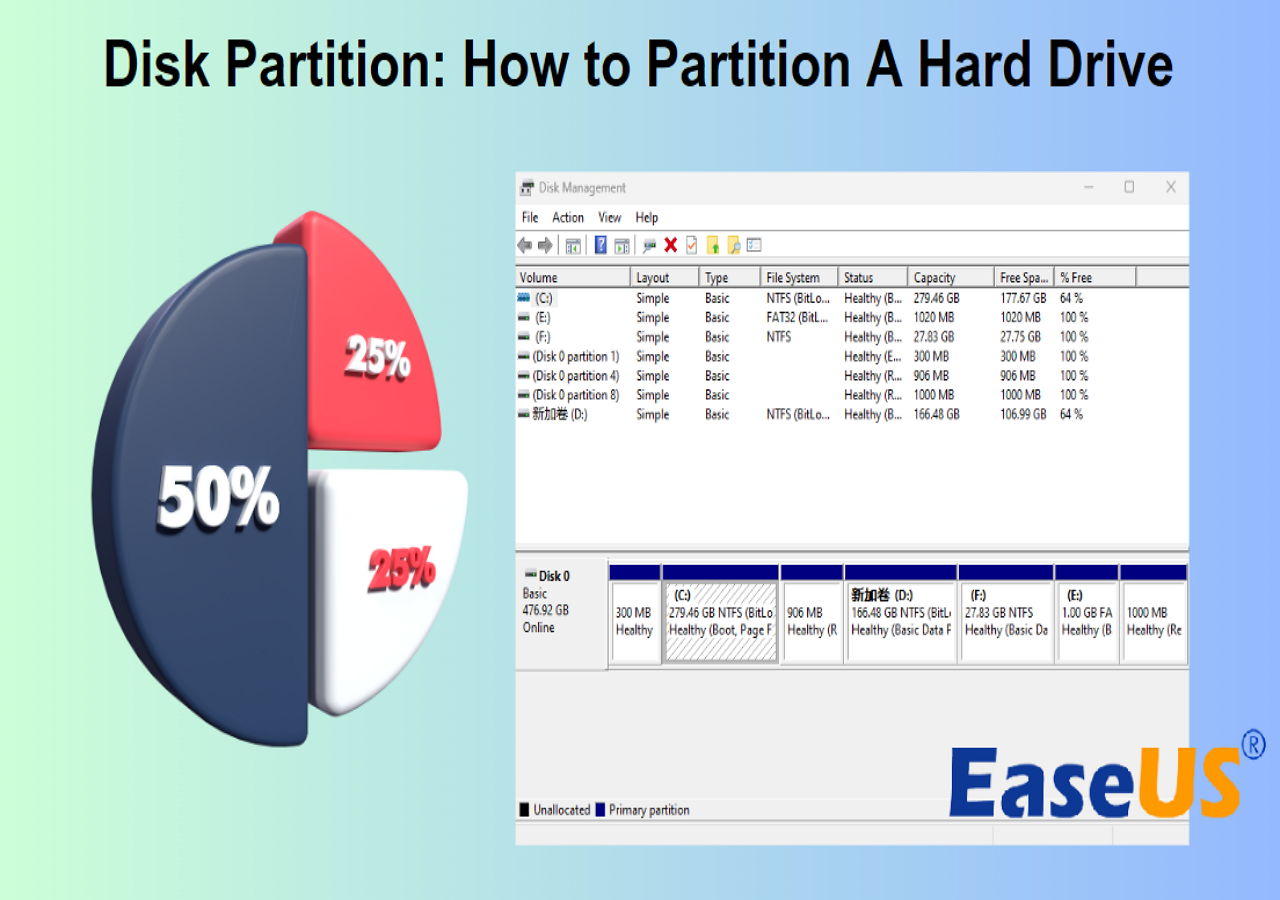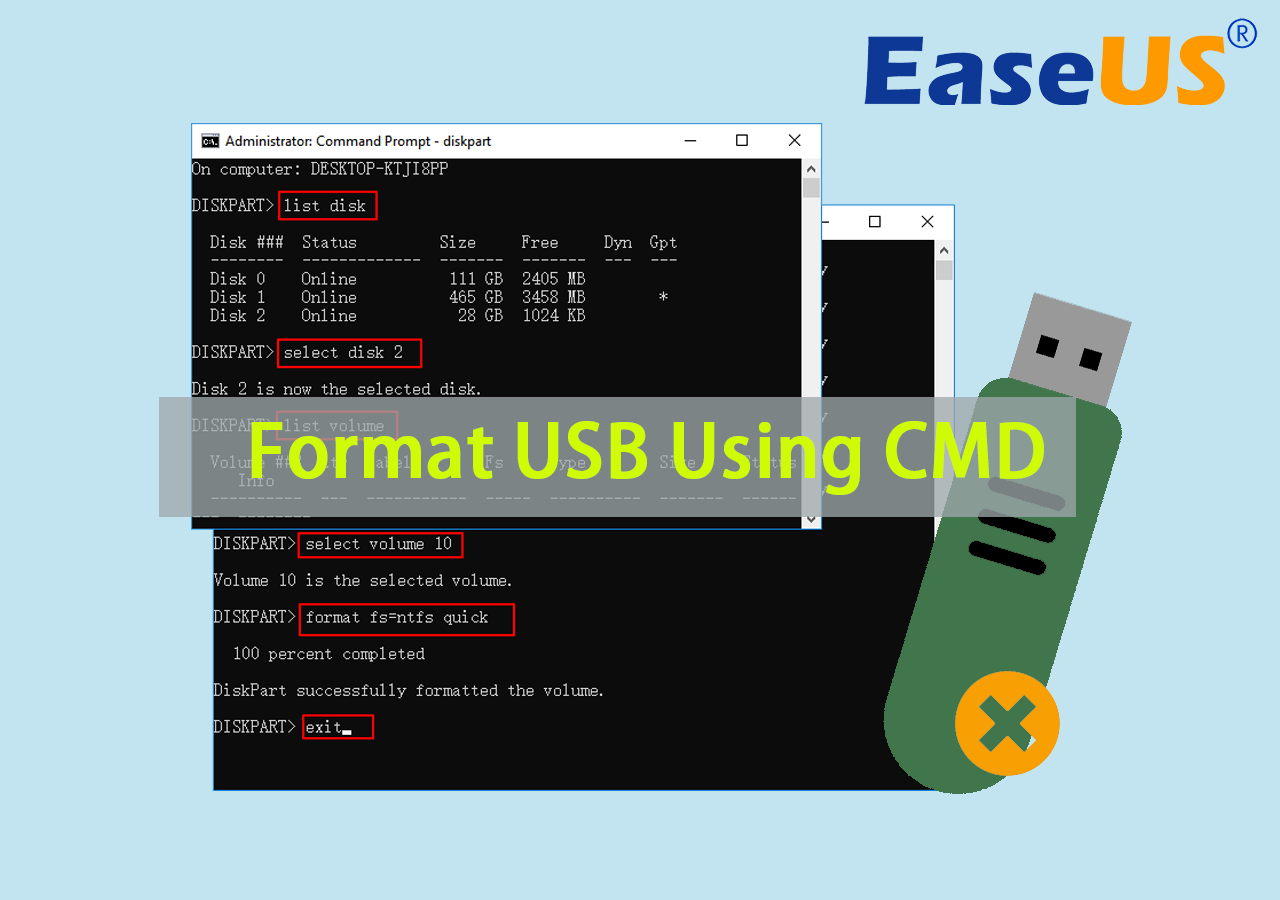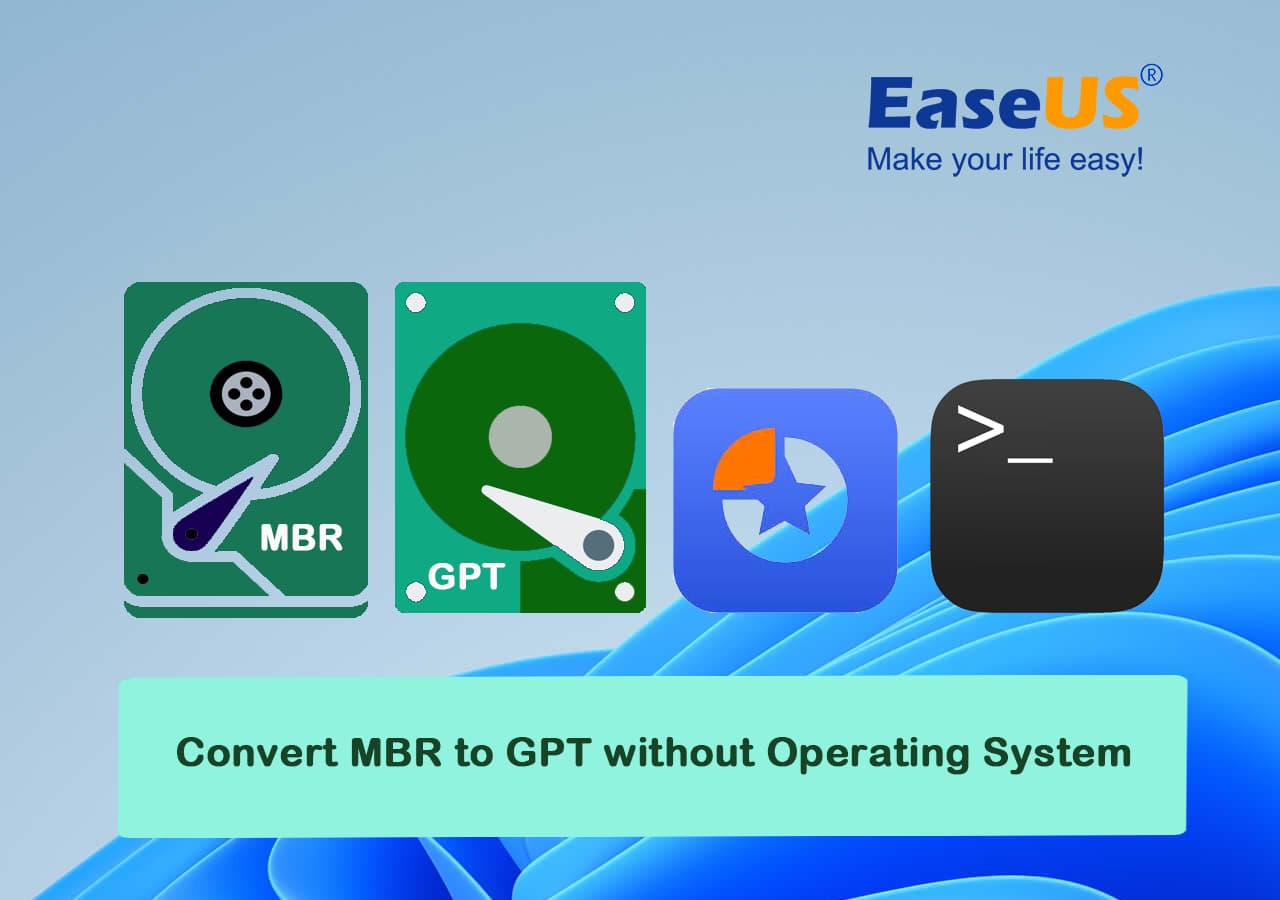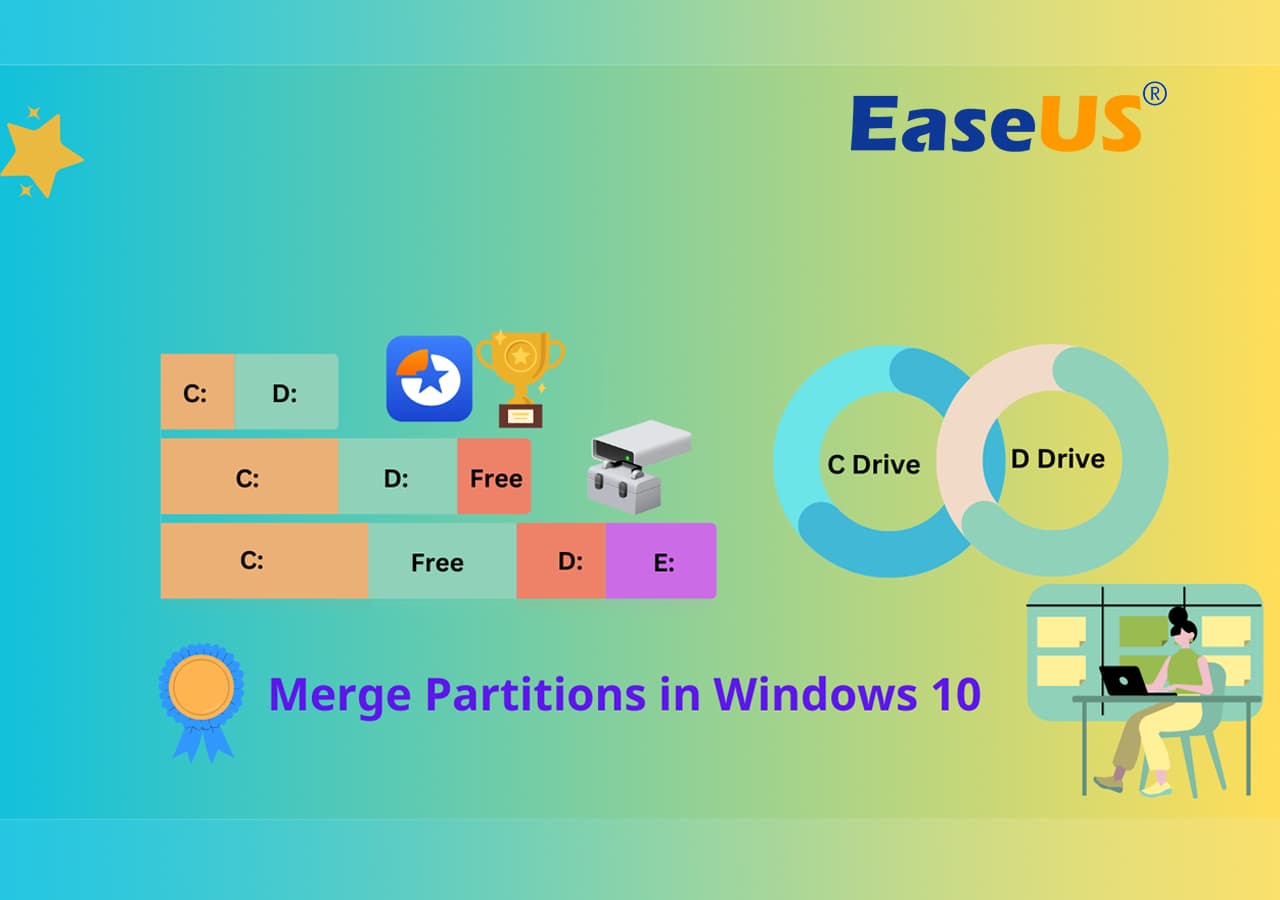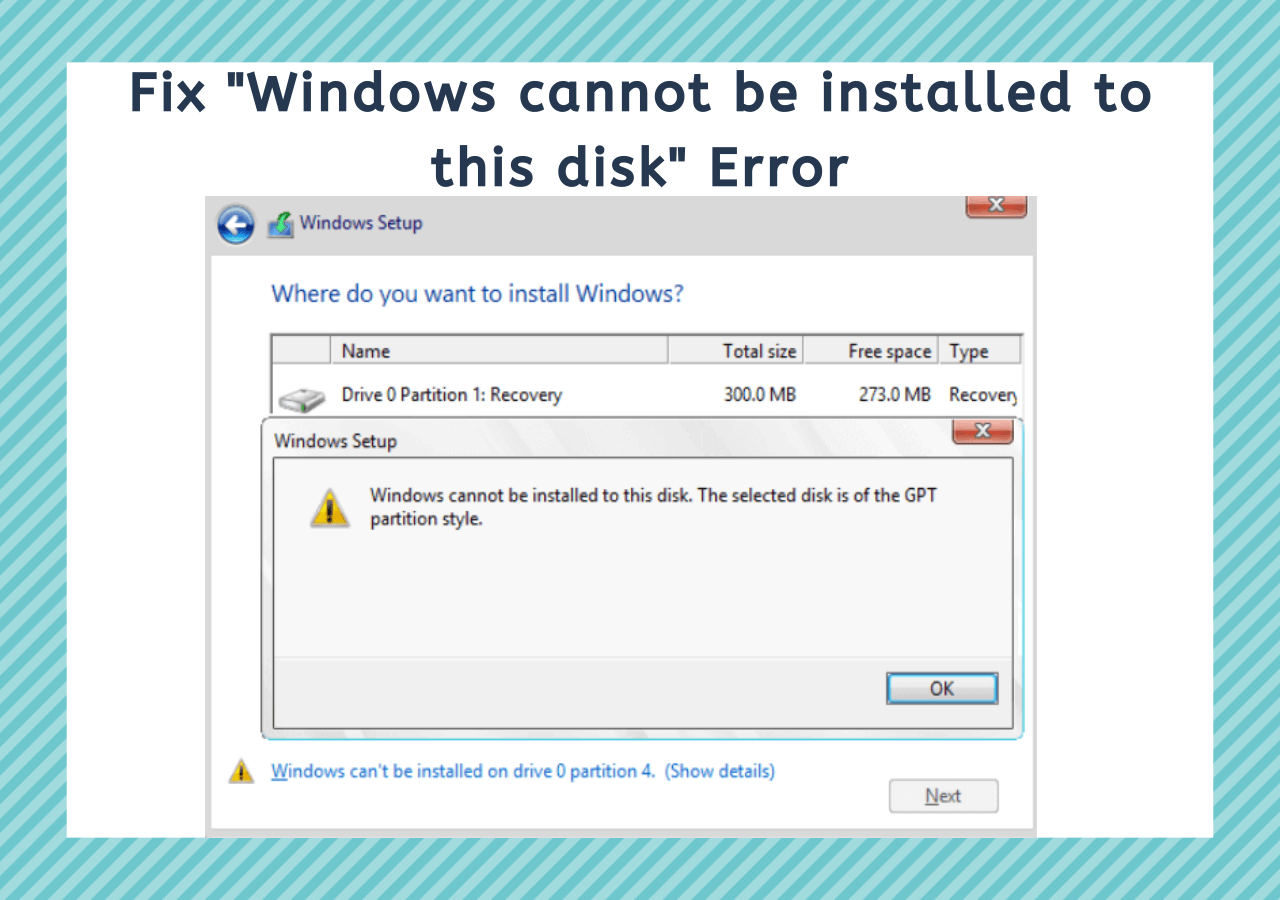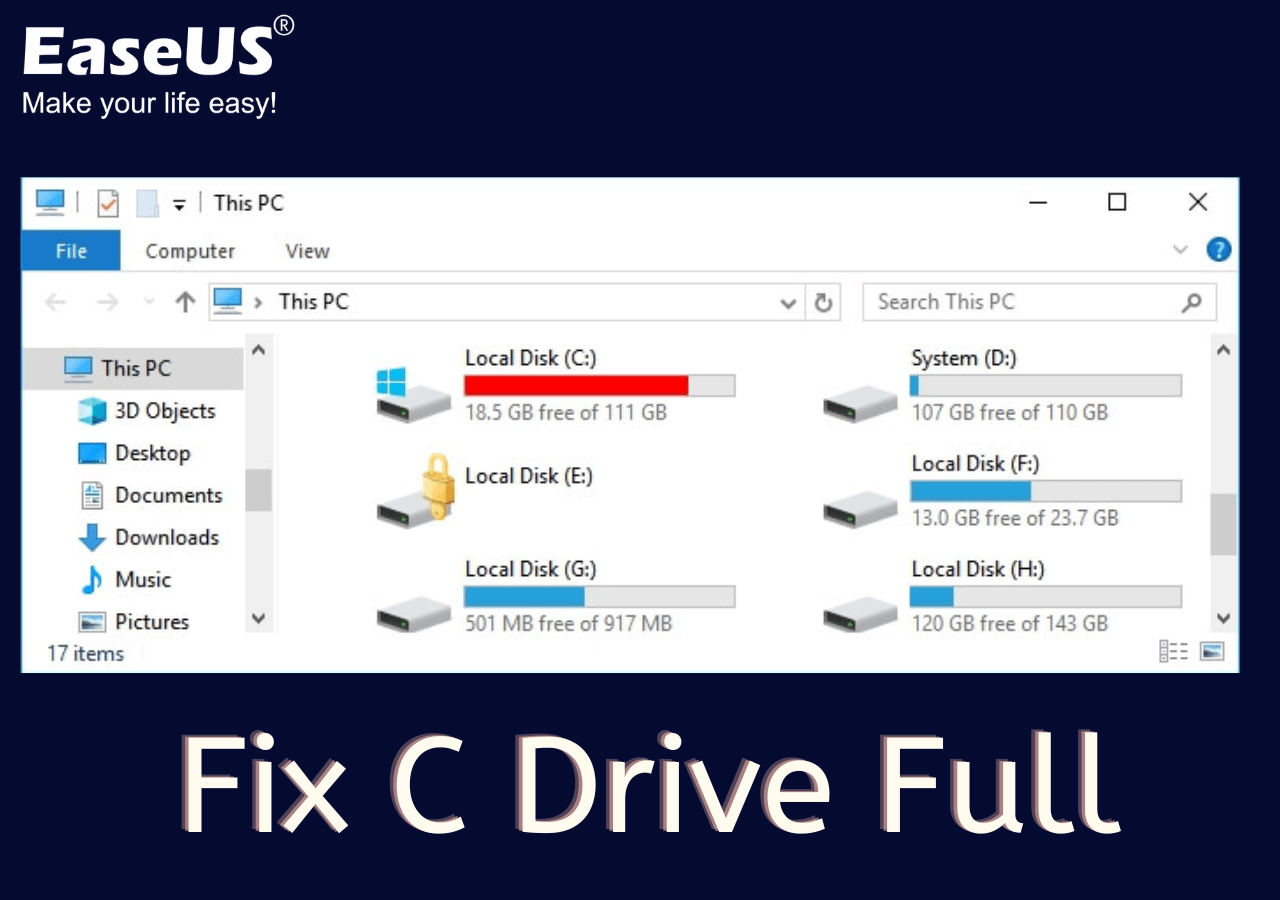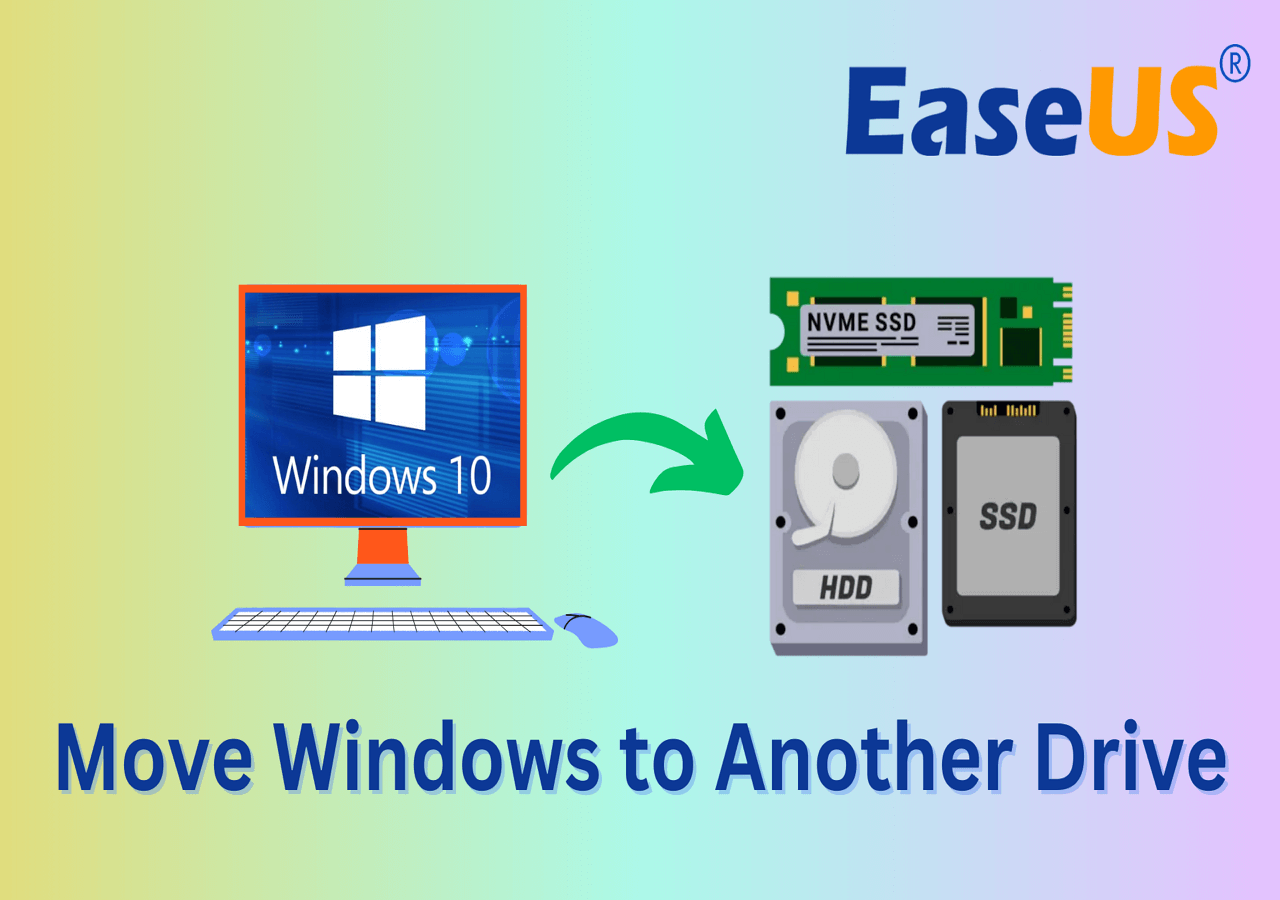Page Table of Contents
About the Author
Hot Topics
Updated on Sep 28, 2025
Finding yourself low on C Drive space is nothing uncommon. After an extended period of the same Windows installation, you might find your main partition bloated with many things. This could mean programs, games, hidden files, etc.
That's when many people start facing problems, such as slowed-down performance, constant low-storage errors, etc. So, they turn to extend their main partition but can't extend c drive Windows 11. So, are you someone who's facing the same issue?
Then, let's find out how you can extend C drive in Windows 11 without losing any data, time, or computer performance.
Can't Extend C Drive with Unallocated Space
Now that we've found out a few causes behind the inability to extend C Drive, try to find a workaround. But is there even a way to work around it? Yes, there is. We can head back to disk management using the same method.
Once we do, we can do a few things such as:
- 1. Using disk management to delete or shrink the volume. This is a common way requiring you to use the Disk Management program to execute.
- 2. Extend C Drive with non-adjacent unallocated space.
- 3. Allocate space from another partition to our C Drive.
The only problem with method 2, and method 3, is that you'll need a third-party tool. This isn't exactly a problem since you can easily do it with the help of EaseUS Partition Master.
Why is that? Because the first step is the only one you can execute with the help of Disk Management, as mentioned before. For all the other steps, you're going to need EaseUS Partition Master. So, let's see how you can do that.
#1. Shrink or Delete a Neighbor Volume to Extend C Drive
To make space on a physical drive, it must feature unallocated space. Since we don't have anyone on our hard drive, we'll be taking some from the Neighbor partition.
We can delete or shrink or delete this Neighbor partition to extend our C Drive.
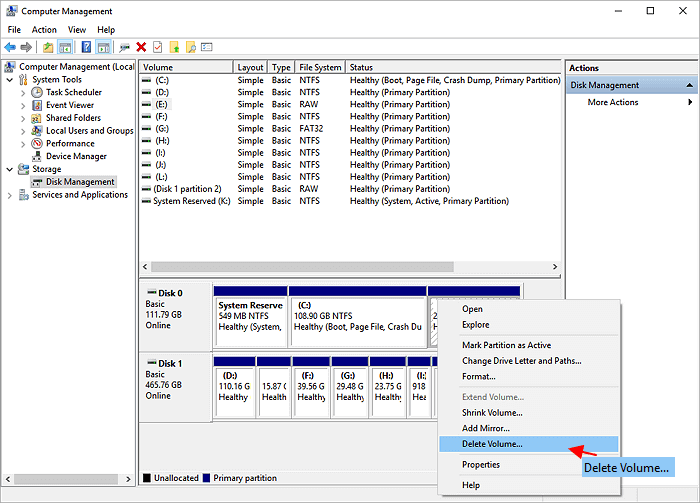
Once the space is unallocated, we'll use that to add to our C Drive.
#2. Extend C Drive with Non-adjacent Unallocated Space
The first step required here is downloading EaseUS Partition Master. Remember, there's no way to add non-adjacent unallocated space to your system partition without the help of a third-party tool. So, once you download & install the tool, you will have to use it.
Step 1. Shrink a neighbor partition to extend partition.
If the hard drive has enough unallocated space to extend the target partition, jump to Step 2, and continue. If not, free up space first:
- Go to the Partition Manager section, right-click on a partition next to the target partition and select "Resize/Move".
- Drag the partition ends to free up space, leaving enough unallocated space behind the target partition, click "OK".
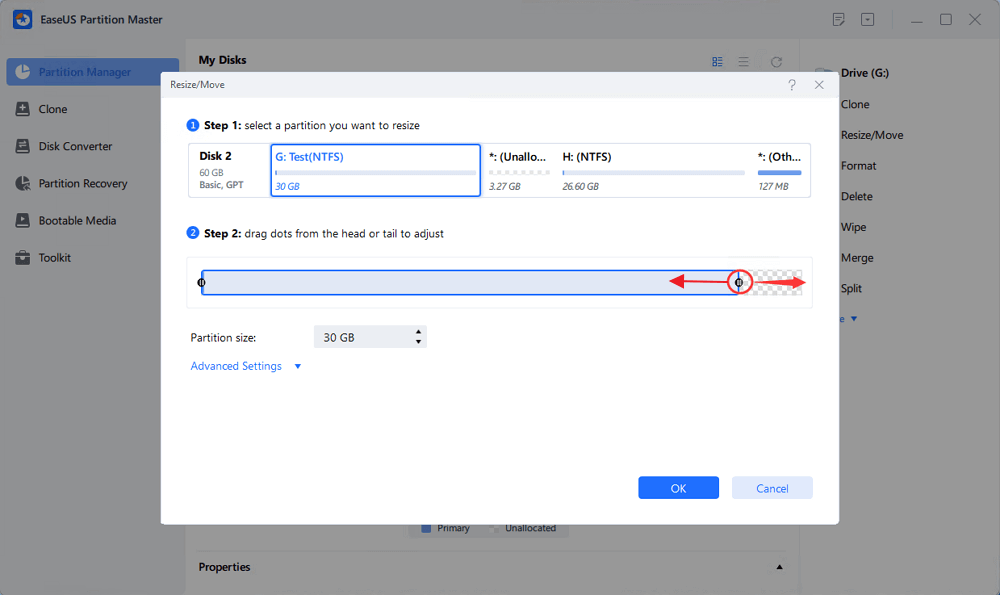
Step 2. Extend the target partition with unallocated space.
Right-click on the target partition you want to extend and select "Resize/Move".
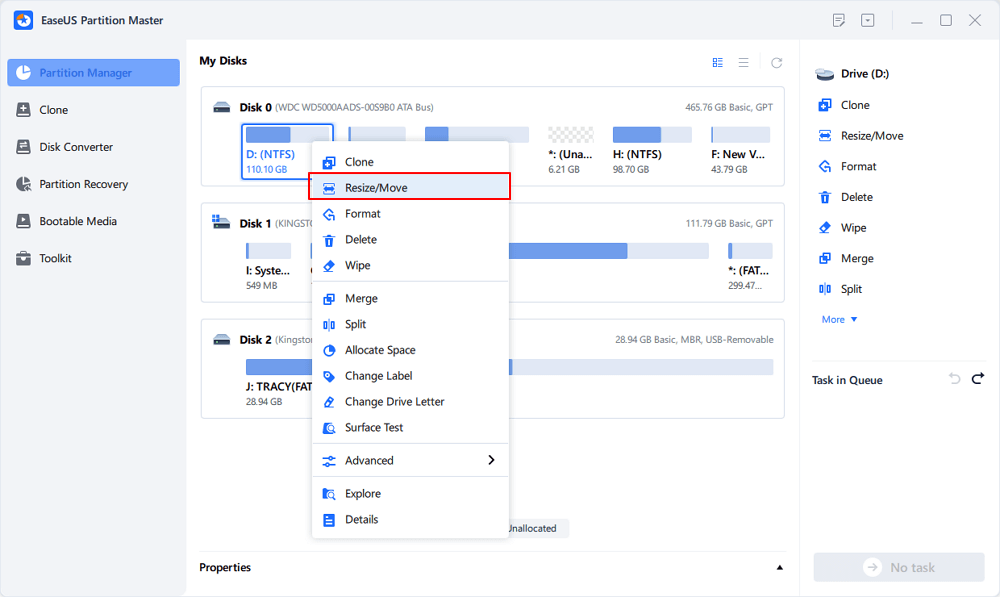
Drag the target partition handle into the unallocated space to extend partition.
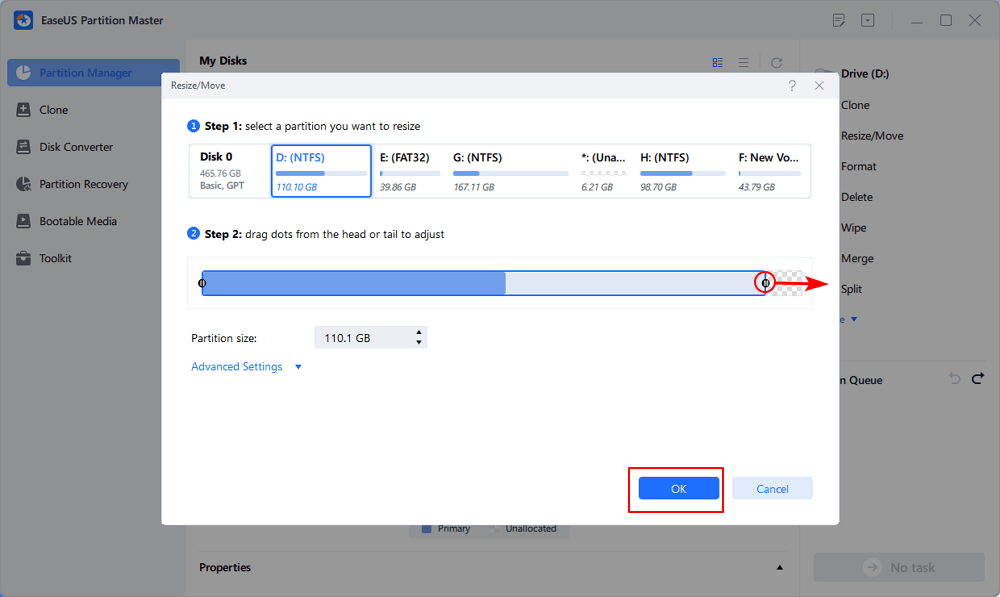
Step 3. Keep all changes.
Click the "Execute Task" button and click "Apply" to keep all changes.
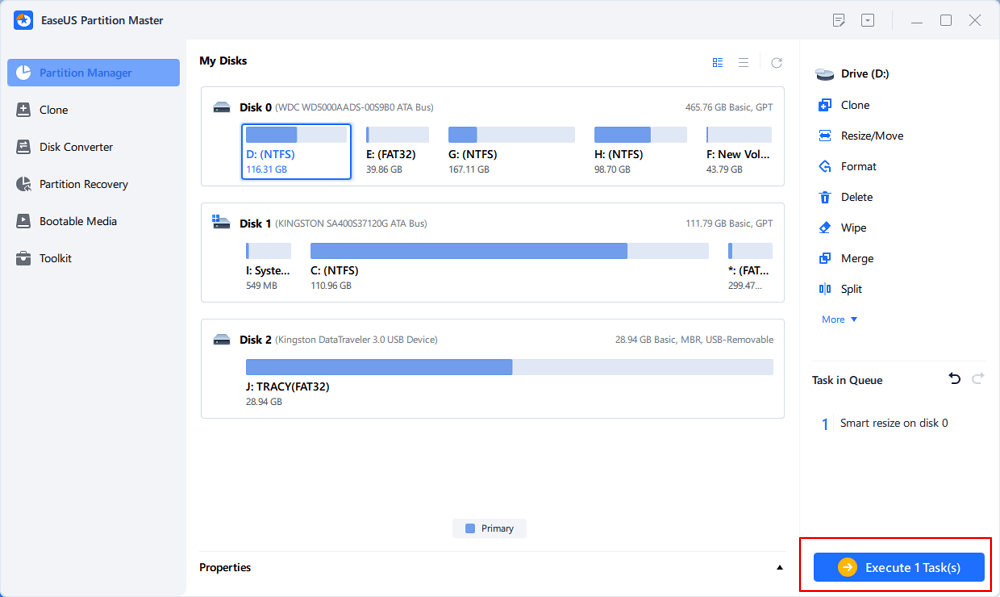
As seen here, the tool puts all of our physical drives at our disposal, and from them, we can pick the ones we wish to use as our non-adjacent unallocated space to extend the C Drive. Also, EaseUS Partition Master offers advanced disk management features, such as partitioning a hard drive.
#3. Allocate Space from Other Drive to C Drive
One of the common problems behind not extending a C drive partition is the lack of available space. If all of the space is taken on your primary drive, then you can take storage from another physical drive. However, you'll need EaseUS Partition master for its Allocate Space feature for this step.
Step 1. Right-click on the D: partition with enough free space and select "Allocate Space".
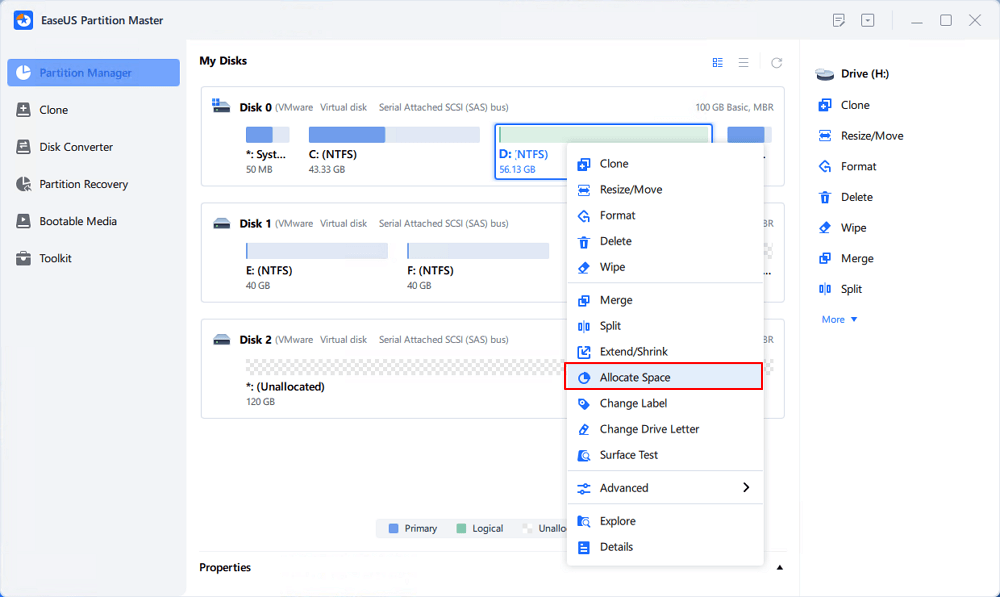
Step 2. Select the target partition - C: drive and drag the partition panel rightward to add the free space from D: drive to C: drive. Then click "OK" to confirm.
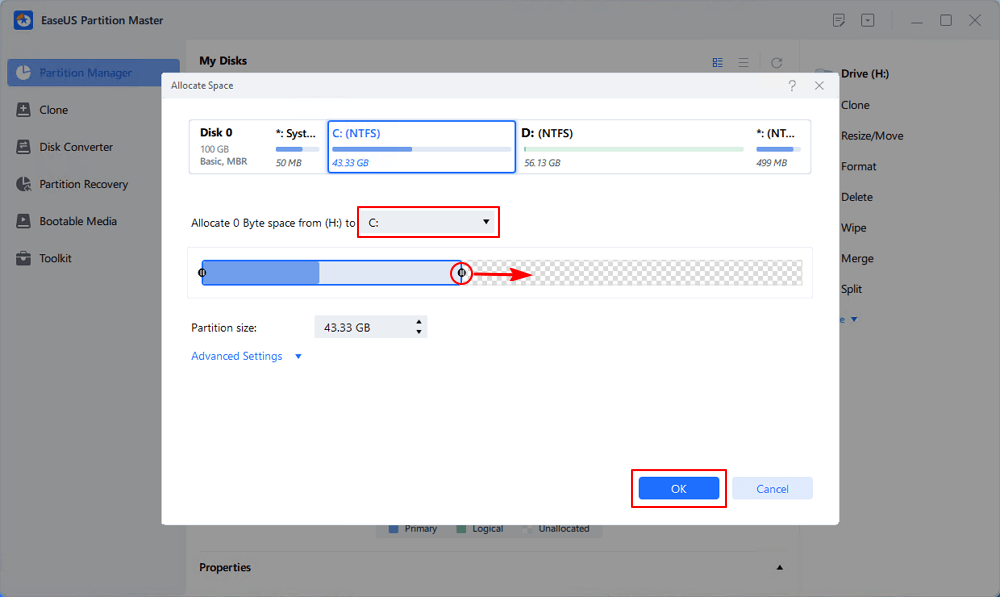
Step 3. Click the "Execute Task" button and click "Apply" to start the process of moving free space from D: drive to C: drive.
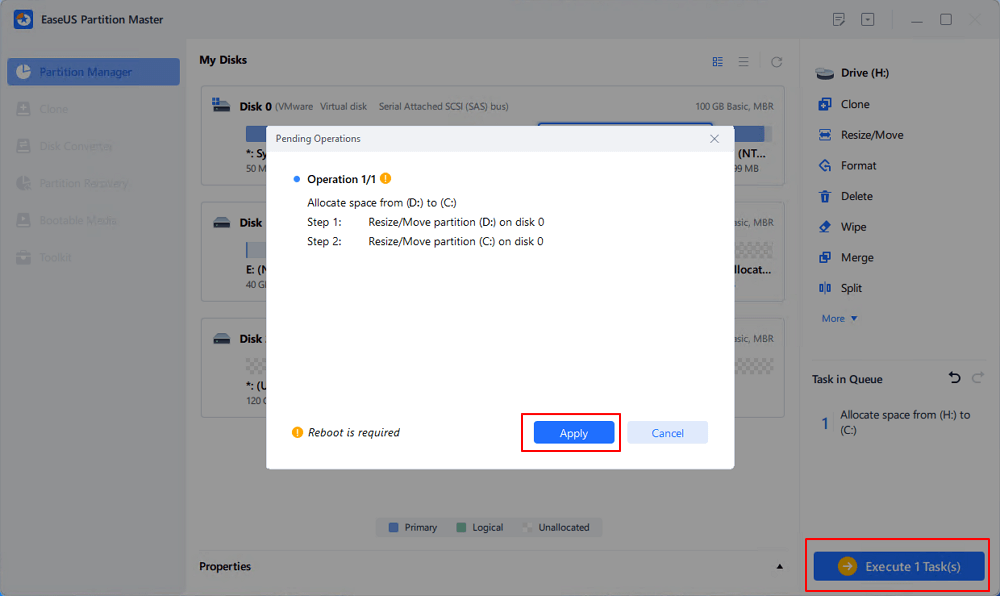
You can allocate however many gigabytes that you wish to from one partition to another—in this case, from G to C. Therefore. You will need EaseUS Partition Master for this convenient extension of your C Drive.
Conclusion:
The "Can't Extend C Drive with Unallocated space" error is fixable. Please ensure you have the correct methods. That's why you can either use the Disk Management tool within Windows or install EaseUS Partition Master. We'll recommend the latter because it covers up all the ends and ensures a smooth partition extension for a beginner.
How Can We Help You
About the Author
Sherly joined EaseUS in 2022 and she has always loved writing articles and enjoys the fun they bring. She receives professional training here, focusing on product performance and other relative knowledge. She has written over 200 articles to help people overcome computing issues.
"I hope my articles can help solve your technical problems. If you are interested in other articles, you can check the articles at the bottom of this page. Similarly, you can also check my Twitter to get additional help."
Product Reviews
-
I love that the changes you make with EaseUS Partition Master Free aren't immediately applied to the disks. It makes it way easier to play out what will happen after you've made all the changes. I also think the overall look and feel of EaseUS Partition Master Free makes whatever you're doing with your computer's partitions easy.
Read More -
Partition Master Free can Resize, Move, Merge, Migrate, and Copy disks or partitions; convert to local, change label, defragment, check and explore partition; and much more. A premium upgrade adds free tech support and the ability to resize dynamic volumes.
Read More -
It won't hot image your drives or align them, but since it's coupled with a partition manager, it allows you do perform many tasks at once, instead of just cloning drives. You can move partitions around, resize them, defragment, and more, along with the other tools you'd expect from a cloning tool.
Read More
Related Articles
-
Can I Format USB Drive From exFAT to FAT32? - YES!
![author icon]() Oliver/2025/09/28
Oliver/2025/09/28 -
How to Create New Partition in Windows Server 2022/2019/2016 - EaseUS
![author icon]() Tracy King/2025/09/28
Tracy King/2025/09/28 -
5 Ways to Hide Drives in Windows 10 | Check Your In-depth Tutorial
![author icon]() Tracy King/2025/09/28
Tracy King/2025/09/28 -
How to Format SD Card Using CMD | Step by Step Guide
![author icon]() Jean/2025/09/28
Jean/2025/09/28
Hot Topics
EaseUS Partition Master

Manage partitions and optimize disks efficiently


